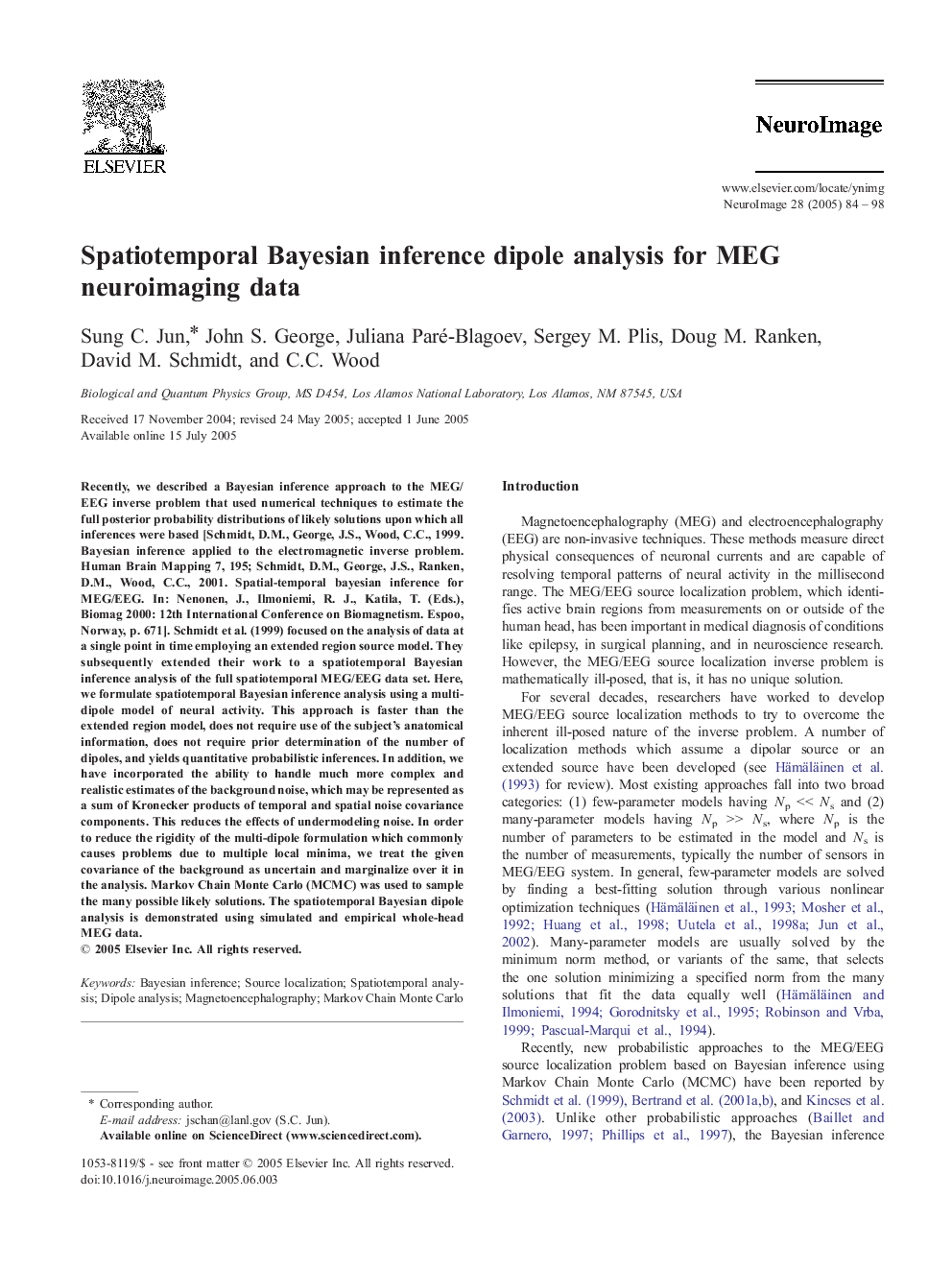| کد مقاله | کد نشریه | سال انتشار | مقاله انگلیسی | نسخه تمام متن |
|---|---|---|---|---|
| 9197762 | 1188871 | 2005 | 15 صفحه PDF | دانلود رایگان |
عنوان انگلیسی مقاله ISI
Spatiotemporal Bayesian inference dipole analysis for MEG neuroimaging data
دانلود مقاله + سفارش ترجمه
دانلود مقاله ISI انگلیسی
رایگان برای ایرانیان
کلمات کلیدی
موضوعات مرتبط
علوم زیستی و بیوفناوری
علم عصب شناسی
علوم اعصاب شناختی
پیش نمایش صفحه اول مقاله

چکیده انگلیسی
Recently, we described a Bayesian inference approach to the MEG/EEG inverse problem that used numerical techniques to estimate the full posterior probability distributions of likely solutions upon which all inferences were based [Schmidt, D.M., George, J.S., Wood, C.C., 1999. Bayesian inference applied to the electromagnetic inverse problem. Human Brain Mapping 7, 195; Schmidt, D.M., George, J.S., Ranken, D.M., Wood, C.C., 2001. Spatial-temporal bayesian inference for MEG/EEG. In: Nenonen, J., Ilmoniemi, R. J., Katila, T. (Eds.), Biomag 2000: 12th International Conference on Biomagnetism. Espoo, Norway, p. 671]. Schmidt et al. (1999) focused on the analysis of data at a single point in time employing an extended region source model. They subsequently extended their work to a spatiotemporal Bayesian inference analysis of the full spatiotemporal MEG/EEG data set. Here, we formulate spatiotemporal Bayesian inference analysis using a multi-dipole model of neural activity. This approach is faster than the extended region model, does not require use of the subject's anatomical information, does not require prior determination of the number of dipoles, and yields quantitative probabilistic inferences. In addition, we have incorporated the ability to handle much more complex and realistic estimates of the background noise, which may be represented as a sum of Kronecker products of temporal and spatial noise covariance components. This reduces the effects of undermodeling noise. In order to reduce the rigidity of the multi-dipole formulation which commonly causes problems due to multiple local minima, we treat the given covariance of the background as uncertain and marginalize over it in the analysis. Markov Chain Monte Carlo (MCMC) was used to sample the many possible likely solutions. The spatiotemporal Bayesian dipole analysis is demonstrated using simulated and empirical whole-head MEG data.
ناشر
Database: Elsevier - ScienceDirect (ساینس دایرکت)
Journal: NeuroImage - Volume 28, Issue 1, 15 October 2005, Pages 84-98
Journal: NeuroImage - Volume 28, Issue 1, 15 October 2005, Pages 84-98
نویسندگان
Sung C. Jun, John S. George, Juliana Paré-Blagoev, Sergey M. Plis, Doug M. Ranken, David M. Schmidt, C.C. Wood,